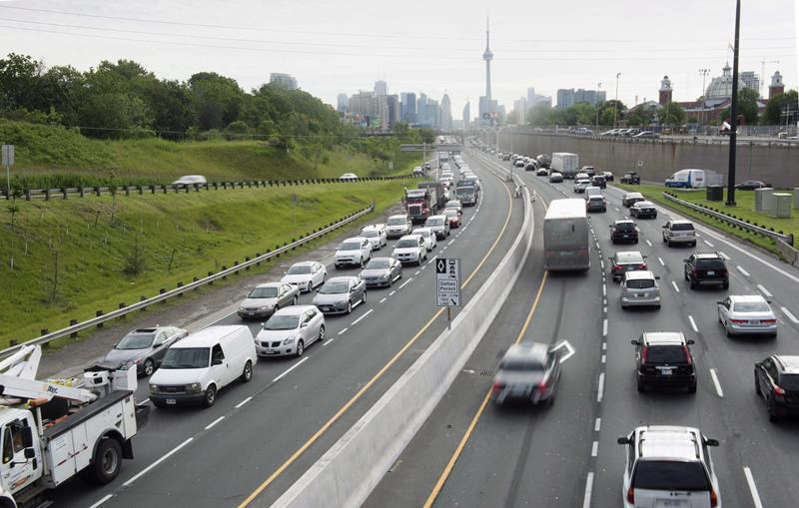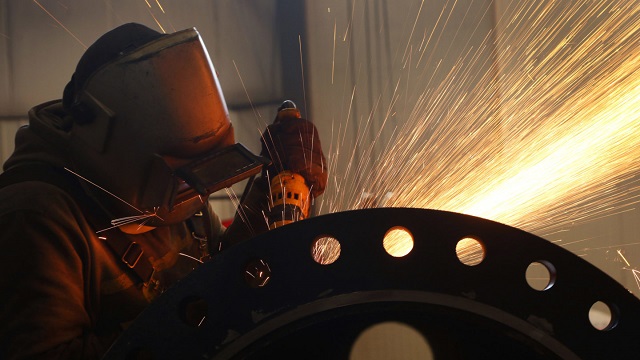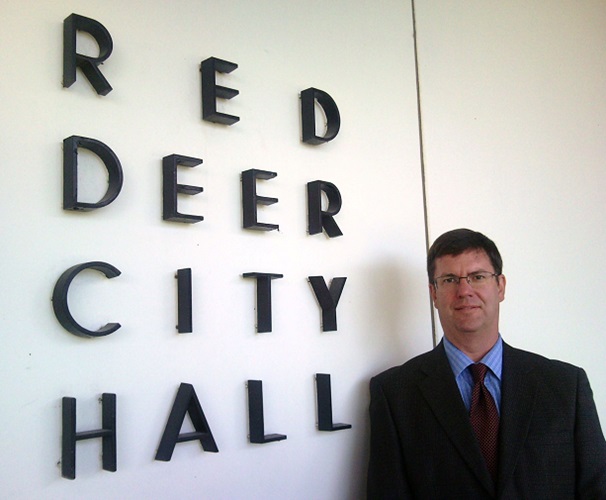• A recent University of Toronto paper by Jeff Allen and Steven Farber examines work access as measured in travel time to get to work. The “30-minute job access” is a rounded-up average in all heavily populated regions in Canada.
• The 2021 census revealed that nationwide, 66.8% of Canadian workers had a one-way travel time less than 30 minutes.
• Automobiles overwhelmingly dominate work access in the reviewed census metropolitan areas (CMA) in Canada compared to public transit which trail automobiles by multiple orders of magnitude.
• Transit in Montreal performs the best with automobiles providing 30-minute access to about 3 times (300%) as many jobs as transit. On the other end, automobiles provide access to almost 10 times as many jobs in a 30 minute trip in Edmonton.
• Canada’s transit commuting share of 30-minute accessible jobs remains a fraction of those available by automobile despite vast increases in public spending designed to decrease automobile usage.
• Governments and their politicians may see this data as a challenge to be met by policies that narrow the gap between auto and transit access. However, the chances of achieving this are virtually nil. Further, the remote work revolution following the Covid lockdowns will make it even less possible.
• Politicians and policy makers would be much wiser to end their focus on forcing or urging Canadians to use transit as opposed to automobiles. From an economic development perspective minimizing work trip travel times should be a primary objective. Improving and adding to road infrastructure is a much wiser use of tax money.
Economy
WHY ARE WE BUILDING SO MANY NEW HOUSES?

WHY ARE WE BUILDING SO MANY NEW HOUSES?
Supply and demand would suggest that we stop building or subsidizing the building of new houses. Our population has increased by only 195 residents in 5 years yet we still built 1299 new houses.
Last year our houses depreciated on assessment by 2%, yet we are still building new houses.
We have neighbourhoods with vast quantities of empty lots, yet we are talking about creating more new neighbourhoods.
Our taxes are going to the maintenance and servicing of empty lots. Our buses are driving down lonely nearly uninhabited streets.
COVID-19 is making people look for bigger lots, but instead of destroying farmland, why don’t we redevelop older neighbourhoods with larger lots?
CMHC tells us that our house pricing could decrease by 20% by 2022, and we are building more houses.
Environmentalists warn us about expanding our foot print. Destroying agricultural land, and we are developing new neighbourhoods.
Climate Change due to human emissions from such things as commuting and we are expanding our foot print building new neighbourhoods.
Along with 1299 new homes, that has been built, we the lowly taxpayer had to pay for servicing, transit, schools, service centres, roads, sidewalks, sewers, mowing, lighting etc so 1299 new homes could be built.
Now let us look at the 42,034 houses that were there before. There used to be 2.4 residents per home now we are down to 2.3 residents per home. 4% decrease. Our taxes went up 10% on older homes, in 4 years but we have fewer people paying the taxes. The values, of our older homes, have decreased below inflation, and a realtor told me that houses are selling at about 10% below assessed value.
Supply is out doing demand and we are financing it with our taxes.
We are being told, over and over again, that we are a one-industry town, and CMHC now says, because of that, we could see a 20% decrease in home values over the next 18 months.
So the first question is; why did we not put more emphasis on diversification? Second question is; why did we not build a city for the residents, and not for the oil industry?
COVID-19 saw many people and businesses adapt and change to meet the new demands when the old demands evaporated?
Why not turn our construction over from building new to refurbishing the old?
So back to my original question. With near zero population growth, fewer residents per house, increasing taxes, increasing expenses, increasing commuting, and increased destruction of farmland, why are we building so many new houses? Anyone?
Red Deer’s 2% house depreciation hurts the most, the ones we need the most.
Business
Multiple more jobs accessible by automobile than by transit

From the Frontier Centre for Public Policy
A recent University of Toronto paper by Jeff Allen and Steven Farber examines work access as measured in travel time to get to work.

Canadian Energy Centre
New national campaign aims to solve worker shortage in Canada’s energy sector

Donovan Doll works on a pipe at the CMR Fabricators Ltd. in Penhold, Alberta. Canadian Energy Centre photo by Dave Chidley
From the Canadian Energy Centre
By Will Gibson
Enserva launches new portal to train workers and provide long-term employment opportunities
Canadian energy services association Enserva has launched its solution to solve a worker shortage of more than 3,000 jobs, including labourers, drivers and tradespeople.
Having spent the better part of two decades working in the world of non-profit groups and think tanks, Enserva CEO Gurpreet Lail was taken aback after hearing about the sector’s labour struggles when she joined in 2021.
“The perception outside the industry was much different,” says Lail. “This has been an ongoing challenge for a long time and our members decided to do something about it.”
The result is a national campaign featuring the new Working Energy Portal, a sector-specific website with comprehensive job listings by the group’s 200-plus member companies and organizations.
“This is an industry-wide challenge and we’ve found an industry solution,” Lail says.
“We lost a lot of people during COVID and the downturn in energy prices and we’re now seeing employers fighting for labour regardless of the sector, be it energy or hospitality or technology,” she says.
“In addition to these factors, our sector also has to address this ridiculous idea that Canadian energy is a dying industry. That’s simply not the case. The world is going to need our energy for a very long time, and we need talented people to help us innovate and produce it responsibly.”

Enserva is hoping to connect those looking for jobs with companies that need positions filled and create a long-term solution to the shortage.
But the portal is more than a job board. It will also serve as a training hub to provide Canadians with the right certifications, courses and a pathway to rewarding careers.
“A lot of this is about educating people about what they might need so they can be successful in the industry, such as getting the right training and certificates,” says Lail.
“Many prospective employers are willing to help prospective employees in order to address their needs for skilled workers. For example, if you have a clean Class 5 driver’s license, some employers who need Class 1 drivers will pay for that training.”
She says that as the energy industry continues to transform to include a mix of oil and gas and renewable sources, it needs to fill current and emerging positions in practices like artificial intelligence, robotics, geothermal energy and environmental sustainability.
Enserva members helped create the portal in part because traditional job-search platforms didn’t always attract the right candidates or missed job seekers with real potential.
“Companies were using websites such as Indeed or LinkedIn but were finding it difficult to get the right candidates. They’d often get more than 1,000 resumes and maybe five to 10 were suitable for interview. It takes a lot of time to sift through those,” Lail says.
“We are supporting our members to create or increase awareness of their companies, and the jobs available. This way promising candidates will not miss a great opportunity and will have opportunities to learn more about energy companies.”
Enserva aims to push into new areas and communities to engage with prospective job seekers.
“We are reaching out to non-traditional areas to showcase the reality that you can have a long-term and rewarding career in this sector if you are a woman, Indigenous or come from a newer community in Canada,” Lail says.
“In addition to this outreach, we are continuing to recruit in traditional areas, such as young people entering the workforce and attracting former energy workers back into the sector.”
-

 Housing2 days ago
Housing2 days agoTrudeau admits immigration too much for Canada to ‘absorb’ but keeps target at record high
-

 Censorship Industrial Complex2 days ago
Censorship Industrial Complex2 days agoTrudeau’s new online censorship law – Problems with Bill C-63 / the Online Arms Law
-

 conflict2 days ago
conflict2 days agoWestern leadership’s detachment from reality is causing terror and death across the globe
-

 Business1 day ago
Business1 day agoDecarbonization deal opens new chapter in Alberta-Japan relationship
-

 Energy2 days ago
Energy2 days agoNew documentary exposing climate alarmism is the latest victim of Big Tech censorship
-

 Censorship Industrial Complex2 days ago
Censorship Industrial Complex2 days agoNPR senior editor admits extreme bias in Russia collusion, Hunter Biden laptop, COVID coverage
-

 Censorship Industrial Complex2 days ago
Censorship Industrial Complex2 days ago“Minority Report”: The Sequel. A warning to the Canadian Church
-

 2024 City Councilor By-Election2 days ago
2024 City Councilor By-Election2 days agoGet to know your candidates for city council: Calvin Yzerman





